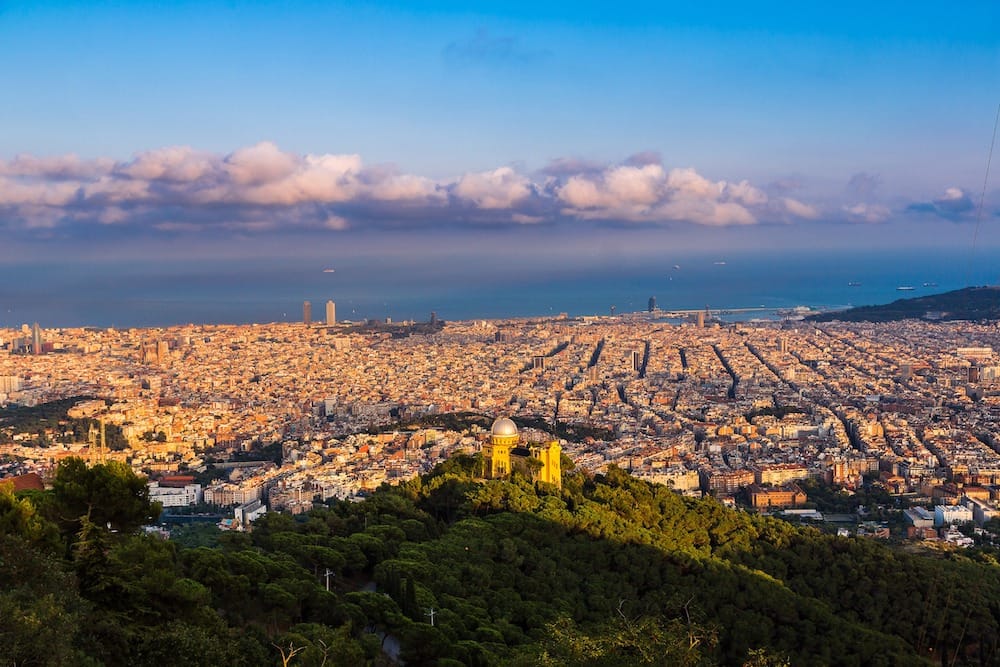March 2, 2023

Barcelona cannot be understood without modernism, it had such a great impact that it transformed the city and the society of the time.
How and when did Catalan modernism develop?
Catalan modernism emerged at the end of the 19th century. Its origin is due to the changes brought about by the industrial revolution (which began in the 18th century, and of which Barcelona was a pioneer) and to the technological advances that arose from it, such as electricity or railway
All over Europe a new way of living was being experienced in which they wanted to move towards a much more modern society.
Main characteristics of Catalan modernism in architecture
One of the greatest motivations of modernism was to break with the forms of the past while creating a new art.
● New forms and materials were sought in nature. Also new airs that were very far from the previous style of industrial architecture, which was obviously much drier and more basic. This was embodied in many factors such as the floor plan of the buildings, the construction materials or the design of the facades.
● He opted for greater freedom when creating. This inspiration in nature that characterizes modernism also translated into new forms that escaped the academic style.
● Architects began to look for preciousness and began to place elements such as shapes and figures of animals or plants to decorate the exteriors. Likewise, they began to turn to larger sculptures (mythological characters or animals, among others), as well as wrought iron lattices or ceramics.
Other factors that influenced the beginning of Catalan modernism
● The return home of those who had gone to America to make their fortune, and were returning with money and a desire for change.
● The first universal exhibition that was organized in Barcelona in 1888. It led to the construction of new buildings and an important urban change in the city.
● The Renaissance, cultural and political movement of the time based on the recovery and exaltation of the Catalan language and culture.
The Cerdà Plan
It was in 1860 when civil engineer Ildefons Cerdà created a plan to expand and reform the city of Barcelona. He did so following the criteria of the Hippodamian plan and with an open, grid-like and equal structure.
The approval of the Cerdà Plan (which led to the creation of the Eixample district) was not without controversy, as it was imposed by the Spanish Government against the plan of Antonio Rovira i Trías, which had already won a competition organized by the City Council.
This plan envisioned an expansion that unfolded over a colossal area that was free of constructions, as it was considered a strategic military zone.
Likewise, it proposed a continuous grid of blocks of 113.3 meters that would go from the Besòs to Montjuïc. These blocks would have 45-degree chamfers that would allow for better visibility (a novelty introduced by the Hippodamian plan) and streets of 20, 30 and 60 meters with a maximum building height of 16 meters.
One of the main objectives of the Cerdà Plan was to build and establish communication routes between Barcelona and nearby towns. Extensive avenues and houses with a maximum height of 3 floors were suggested.
Ildefons Cerdà was a great advocate for the balance between urban advantages and rural values. One of his maxims within this plan was to “ruralize” the urban while “urbanizing” the rural with the aim of achieving balance.
However, the plan took a long time to be developed, more than a century. In addition, much of what was initially conceived was distorted quite a bit. Many of these initial guidelines were not even applied. This was largely due to various interests of landowners and speculation.
Contributions of modernism in the architectural development of Barcelona
The cultural current of modernism manifests itself in many areas such as thought or the arts, but it is in architecture where it achieved greater fullness.
And there were many changes that came: the curved lines, the color or an exuberant decoration are just some of them. Likewise, arts such as painting, sculpture, ceramics, glass or wrought iron were recovered with the aim of obtaining an innovative architecture.
There is no doubt that Barcelona and modernism are closely linked. Currently, around 116 works from this movement are preserved in the city. Let’s see which are some of the most representative:
The Holy Family
It is the most visited tourist monument in Spain. It has become quite a symbol of the city. Works began in 1882 by Antoni Gaudí, who dedicated more than 40 years of his life to it. It is estimated that it will be completed in 2026.
The Bellesguard Tower
The Torre Bellesguard built by Antoni Gaudí between 1900 and 1909, is a key work of Catalan modernism for its unique fusion of architectural styles, its beauty and its historical importance.
Palau de la Música Catalana
Works on the Palau de la Música Catalana began in 1905, precisely on a day as important for the city as Sant Jordi. These, despite the seeming lie, only lasted three years. With ceramic cladding and exposed work, it has a facade that surprised the inhabitants of the city when it was inaugurated in 1908 with a magnificent concert.
Some of the most representative architects of Catalan modernism
Within Catalan modernism there are great architects, of which we will only cite three:
Antoni Gaudi
Gaudí is one of the greatest representatives of Catalan architectural modernism. The vast majority of his works declared by Unesco as World Heritage are in Barcelona.
With clear influences from Gothic art, the organic forms of nature and Oriental constructions, Gaudí has an innovative and creative way of understanding architecture.
José Puig and Cadafalch
This architect, born in Mataró in 1867, is considered one of the most relevant within Catalan modernism. A clear taste for the medieval can be seen in his works. In them he uses historicist elements through which he sought originality and novelty. The Amatller House, the Palau del Baró Quadres and the Company House are some of the most significant.
Domènech and Montaner
Lluís Doménech i Montaner, born in Barcelona in 1850, is a clear exponent of the transition from the most eclectic to the most modern architecture.
The ornamentation of its buildings is fundamentally based on Spanish-Arabic architecture. The curvilinear lines typical of modernism also predominate.
His works include the Hospital de Sant Pau, the Palau de la Música Catalana and the Restaurant Es castell dels 3 dragons, among others.
Works of Catalan modernism outside the city
Although Barcelona was the center of modernism, we can find examples all over Catalonia, such as:
The House Rull
Located in Reus, dates from 1900. The facades of Casa Rull combine stone and bricks and are finished with battlements. On its first floor you can see a colorful balcony with floral decoration on a railing.
The Coll i Regàs House
This modernist building designed by Josep Puig i Cadafalch in 1898 is located in Mataró. It owes its name to the fact that it was commissioned by textile entrepreneur Joaquim Coll i Regàs. In 2000 it was declared a Cultural Property of National Interest.




